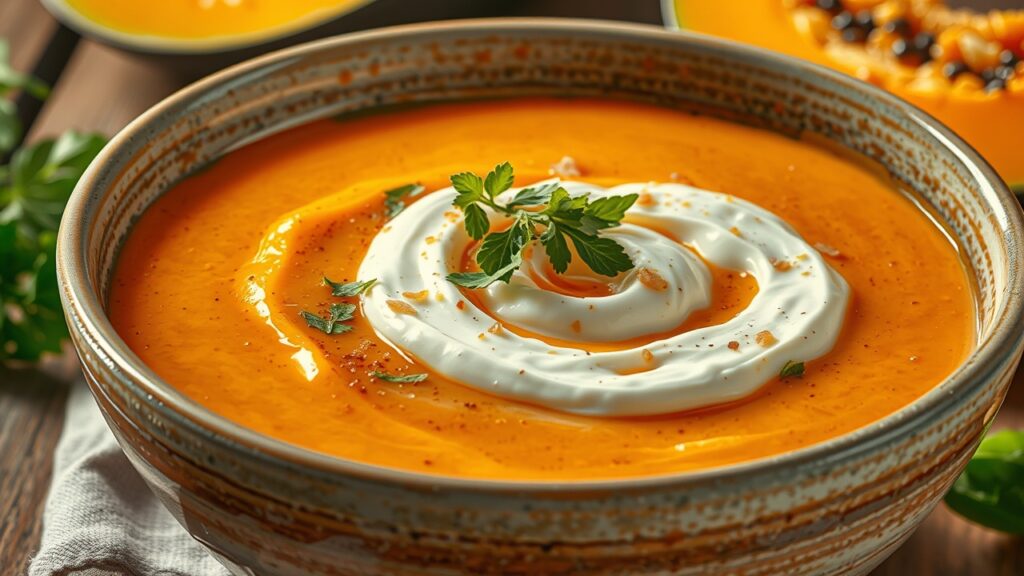Eating more plant-based meals is one of the best ways to stay healthy and feel good. It’s also a great way to enjoy creative dishes that bring new flavors to your table. If you love Chinese food and want to try something different, Kabocha squash is the perfect ingredient to start with.
This sweet and creamy squash is a favorite in Asian cooking. It’s packed with nutrients like beta-carotene, fiber, and vitamins. Whether you’re a long-time vegan or just looking to add more veggies to your meals, these simple Chinese-inspired recipes featuring Kabocha squash are easy to make and incredibly tasty.

Why Kabocha Squash is Amazing
Kabocha squash, sometimes called Japanese pumpkin, is a superfood for vegans. It’s naturally sweet, has a smooth texture when cooked, and works well in a variety of dishes. Plus, it’s loaded with healthy stuff like:
- Vitamin A for better eyesight and skin health
- Fiber to help with digestion
- Low calories for a healthy diet
And the best part? It’s super versatile! You can roast it, steam it, or stir-fry it to create meals that are as comforting as they are nutritious.
Easy Chinese Squash Recipes with Kabocha Vegan
Here are three simple and delicious recipes you can try at home.
1. Simple Kabocha Squash Soup

This soup is creamy, warm, and full of flavor—a perfect starter or light meal.
| Ingredients | Per Serving (Approx.) | Servings |
| 2 cups Kabocha squash, peeled and cubed 1 tbsp grated ginger 3 cups vegetable broth 1 tbsp soy sauce | 150-180 calories | 2-3 |
Instructions:
- Cook the squash in boiling water until soft.
- In a pot, sauté the ginger for a minute, then add the vegetable broth and squash.
- Simmer for 10 minutes, then blend until smooth.
- Add soy sauce for seasoning, and enjoy warm.
2. Stir-Fried Kabocha with Garlic and Greens

This dish is quick, healthy, and goes great with rice.
| Ingredients | Per serving (Approx.) | Servings |
| 2 cups sliced Kabocha squash 2 cups bok choy or spinach 2 cloves garlic, minced 2 tbsp soy sauce | 120-150 calories | 2-3 |
Instructions:
- Heat a pan with a little oil and cook the garlic for 1 minute.
- Add the squash slices and stir-fry until golden.
- Toss in the greens and soy sauce, cooking until just tender.
- Serve hot for a nutritious side or main dish.
3. Sweet and Sour Kabocha Stir-Fry

A fun, tangy recipe that’s easy to whip up.
| Ingredients | Per Serving (Approx.) | Servings |
| 2 cups cubed Kabocha squash 1 red bell pepper, chopped 1 onion, sliced 2 tbsp soy sauce 1 tbsp vinegar 1 tbsp sugar or maple syrup | 180-200 calories | 3-4 |
Instructions:
- Cook the onion and bell pepper in a pan until soft.
- Add the squash cubes and stir-fry for 5 minutes.
- Mix the soy sauce, vinegar, and sugar, then pour over the veggies.
- Stir well and cook for another 2-3 minutes before serving.
Tips for Cooking with Kabocha Squash
- Cut with Care: Kabocha squash has tough skin, so use a sharp knife to cut it into chunks. You can leave the skin on—it’s totally edible when cooked!
- Roast for More Flavor: Roasting Kabocha brings out its natural sweetness. Just toss it with a little oil and bake at 400°F (200°C) for 20 minutes.
- Store Leftovers Smartly: Keep cooked squash in the fridge for up to 3 days, or freeze it for later use in soups and stews.
Why You Should Try These Recipes
These recipes are easy to make, packed with nutrition, and perfect for anyone wanting to eat healthier without sacrificing flavor. With Kabocha squash, you can enjoy the rich tastes of Chinese cuisine in a simple, vegan-friendly way.
So, why not give these dishes a try? You’ll discover how fun and satisfying plant-based cooking can be, and your taste buds will thank you!
FAQs About Vegan Chinese Squash Recipes
1. Can I use other types of squash instead of Kabocha?
Yes, butternut squash or acorn squash can be used as substitutes. However, Kabocha’s unique sweet and creamy texture makes it stand out in recipes.
2. Is Kabocha squash skin edible?
Absolutely! The skin softens during cooking and is rich in nutrients. You can peel it if you prefer a smoother texture.
3. Are these recipes gluten-free?
Most of these recipes are naturally gluten-free if you use tamari or a gluten-free soy sauce.
4. How do I store unused Kabocha squash?
Uncut Kabocha squash can be stored in a cool, dry place for weeks. Once cut, wrap it tightly and refrigerate for up to 3 days.
5. Can I make these dishes oil-free?
Yes! Use water or vegetable broth to sauté ingredients instead of oil. It’s a great way to keep recipes lighter and healthier.
Conclusion
Kabocha squash is a versatile, nutritious, and flavorful ingredient that brings a unique touch to Chinese-inspired vegan dishes. From hearty soups to quick stir-fries, this superfood fits seamlessly into a plant-based lifestyle. Whether you’re trying to eat healthier or simply looking to explore new flavors, these recipes are a fantastic way to add variety to your meals.
Cooking with Kabocha squash is not only easy but also incredibly rewarding. Its creamy texture and natural sweetness make it a favorite in both savory and sweet dishes. Give these recipes a try and see how this humble squash can transform your kitchen into a hub of delicious, plant-based creativity.